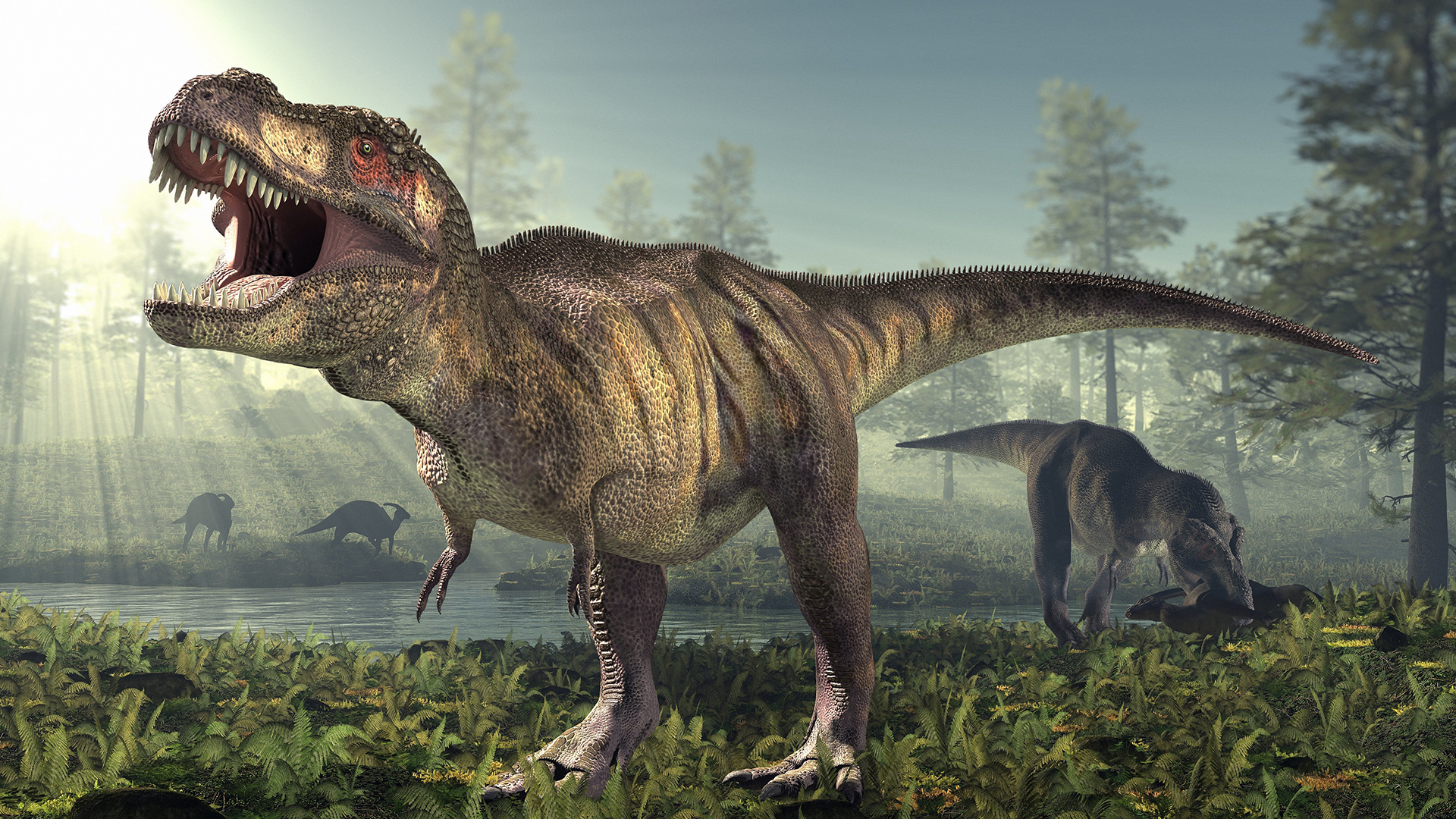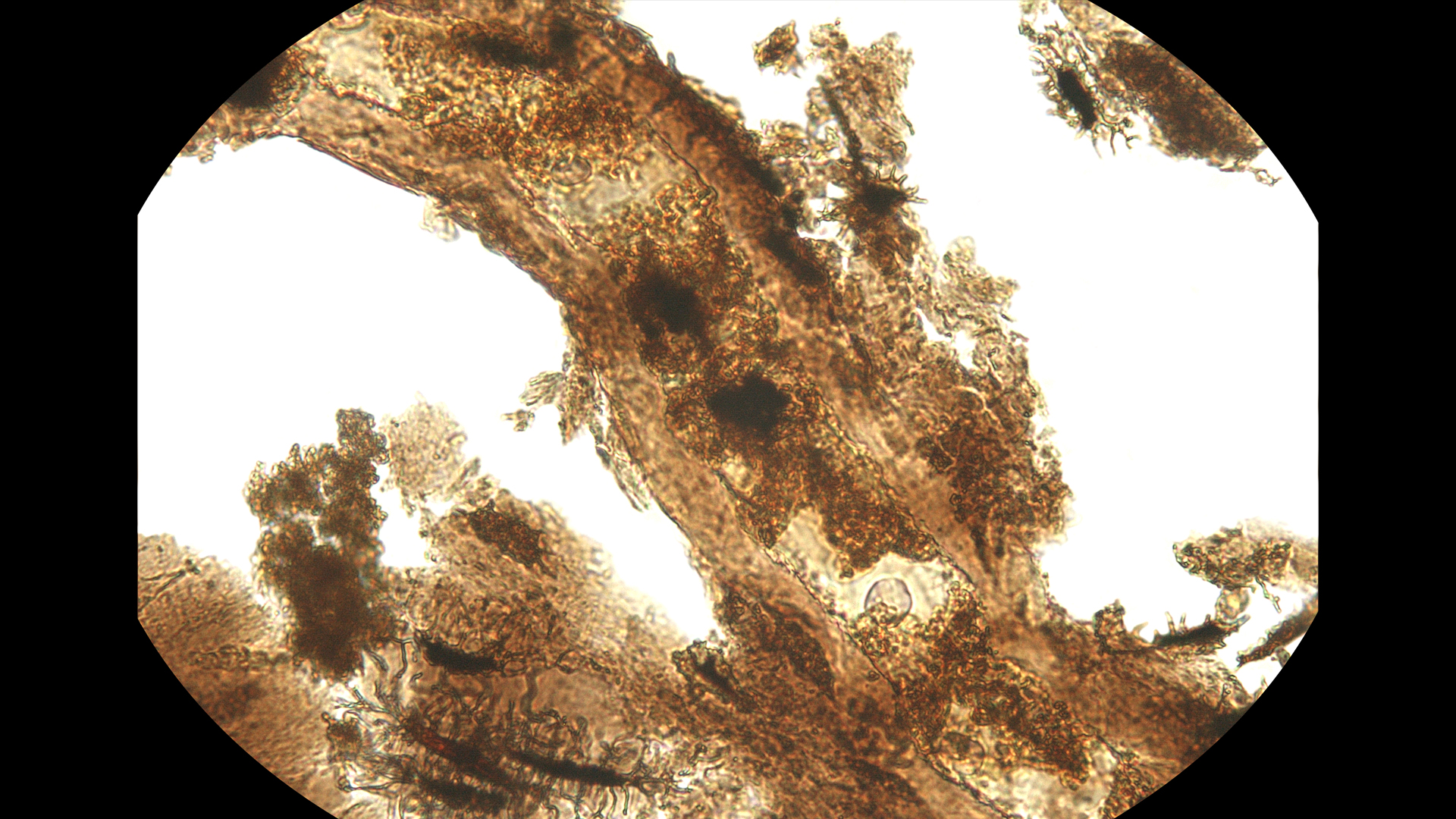T. rex and its close relatives were warm-blooded like modern birds
Dinosaur blood ran hot and cold, scientists recently discovered.

Birds keep themselves warm with heat generated by some of the most hard-working metabolisms on the planet, while lizards rely on the sun to keep them toasty. Both of these groups are linked to dinosaurs, and because of this, paleontologists have long wondered if dinosaurs had so-called cold-blooded metabolisms like their lizard cousins, or warm-blooded metabolisms like their avian relatives. Now scientists know the answer: It’s both.
An animal’s metabolism refers to how much energy its body uses to carry out normal functions. A higher metabolism — which requires more energy to maintain — means that an animal can be more active, but the animal has to eat enough food and breathe enough oxygen to keep its metabolic engine running. As an added bonus, a high metabolism generates heat that keeps animals warm, hence the term warm-blooded, or endothermic. The opposite metabolic strategy requires less energy to maintain and is known as cold-blooded, or ectothermic. Cold-blooded animals need less oxygen and food than endothermic creatures but have to regulate their body temperatures with behavior. Instead of generating their own heat, they maintain their internal temperature by basking in the sun or hiding in the shade.
"Birds inherited their exceptionally high metabolic rates from their dinosaur ancestors, which is pretty cool," Jasmina Wiemann, currently a postdoctoral researcher at CalTech and lead author on a new study about dinosaur metabolisms, told Live Science. In an analysis of 55 living and extinct species (many of them dinosaurs), Wiemann and co-authors found that warm-bloodedness, which is currently only seen in mammals and birds, was quite widespread among dinosaurs, but that not all dinosaurs were warm-blooded.
By analyzing species from various dinosaur groups, the team traced the evolution of warm-blooded and cold-blooded metabolisms through time. They found that dinosaurs descended from an ancestor were likely warm-blooded, but dinosaurs didn’t all stay that way. In the Triassic period, between 251.9 million and 201.3 million years ago, dinosaurs split into two major groups: the saurischians ("lizard-hipped" dinosaurs) and the ornithischians ("bird-hipped" dinosaurs). Evidence suggests that the saurischians, including meat-eating theropods like Tyrannosaurus and Allosaurus among many others, were warm-blooded creatures like their ancestors. Birds are descended from this lineage and have retained a warm-blooded metabolism.
The ornithischians, which include Triceratops and duck-billed Hadrosaurus, lost their fast metabolism over time and became cold-blooded species.
Related: Long-necked dinosaurs probably had even longer necks than we thought
This data backs up findings from prior research. For example, previous studies found that Stegosaurus, an ornithischian genus of armored plant-eaters, had an exceptionally low growth rate — a hallmark of a slow, cold-blooded metabolism. Another study found that hadrosaurs, a group of duck-billed plant eaters, seemed to have body temperatures that were far too variable for the animals to be warm-blooded. Other studies have pointed to warm-bloodedness, like the finding that some dinosaur species lived year-round in the Arctic. This is the first study to show that dinosaurs had diverse metabolisms, and they follow an evolutionary pattern. "It's quite nice to get to the root of it and realize that these are true patterns, not just artifacts," Wiemann said.
Get the world’s most fascinating discoveries delivered straight to your inbox.
According to Wiemann, studies that explored dinosaur metabolism had two big drawbacks. For one, they tended to infer metabolism indirectly by analyzing egg shell thickness, tooth structure, or isotopes — variations of an element with differing numbers of neutrons — that are left over after fossilization. These are often used to determine growth rate or body temperature, which are proxies for metabolic rate. These proxies can give clues to an animal’s metabolism, but don't measure the metabolism directly. Secondly, the methods used to conduct this research are often destructive and require that researchers damage fossils to tease out their secrets.
For the new study, instead of grinding priceless fossils to dust, Wiemann and her colleagues used a light-scattering microscope to determine the chemical makeup of dinosaur bones. Specifically, they looked for waste products from the metabolism itself (such as broken-down fats) which could hint at oxygen use in an animal’s body — a direct measure of metabolic rate.
While this study supports findings from some previous work on dinosaur metabolisms, Wiemann’s non-destructive sampling method might provide scientists with an unprecedented ability to explore metabolic evolution in other extinct lineages, not just dinosaurs.
This non-destructive method means paleontologists can delve into museum collections, "take a bone off the shelf and analyze it without any major preparation," Wiemann said. "For that reason, we could, for the first time, build one of these really large datasets that then actually connect the dots."
Deducing the patterns of metabolic evolution in dinosaurs has also raised questions about the metabolisms of living animals.
For example, birds are the only dinosaur group that survived the mass extinction at the end of the Cretaceous period (approximately 145 million to 66 million years ago), so it might seem like their highly active metabolisms lent them an advantage. However, many other dinosaurs that seemed to have energy-hungry metabolic rates weren’t so fortunate. Whether metabolism played much of a role in survival at this time is one question that Wiemann hopes might soon be answered.
The study also found that warm-blooded metabolisms appeared in three separate evolutionary lineages: in dinosaurs, in mammals, and in a group of extinct marine reptiles known as plesiosaurs. Not only did these lineages gain higher metabolisms independently of one another, they all did it around the same time, during the Triassic period. "I think it's quite fascinating to realize that it all happened around more or less the same time," said Wiemann.
Wiemann noted that future studies using the team’s research method could expand scientists' knowledge of metabolic evolution. "They could eventually tell us what role mass extinctions and evolutionary bottlenecks actually play, in terms of creating the opportunity for different animal groups to expand and explore their metabolic capacities," said Wiemann. "I think there is something very exciting out there in the future."
The findings were published May 25 in the journal Nature.
Originally published on Live Science.

Cameron Duke is a contributing writer for Live Science who mainly covers life sciences. He also writes for New Scientist as well as MinuteEarth and Discovery's Curiosity Daily Podcast. He holds a master's degree in animal behavior from Western Carolina University and is an adjunct instructor at the University of Northern Colorado, teaching biology.



